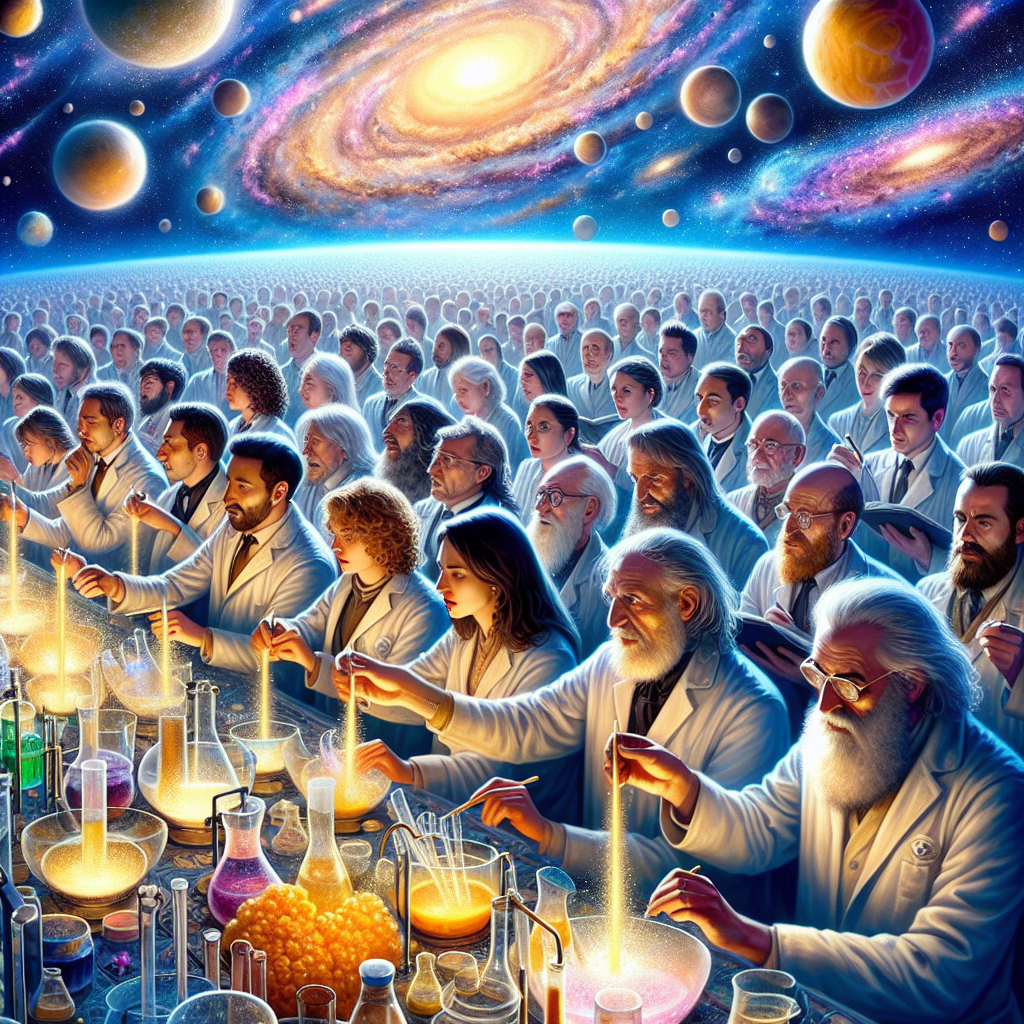In a groundbreaking achievement, scientists have successfully replicated the formation of the universe’s earliest molecules, providing fresh insights into the origins of star formation and challenging our understanding of the early cosmos.
The universe as we know it began approximately 13.8 billion years ago with the Big Bang. After this tumultuous event, the cosmos cooled down, paving the way for the formation of the first molecules. These molecules, primarily composed of helium and hydrogen, played a critical role in the creation of the first stars.
In an effort to understand more about the early universe and the birth of stars, scientists have been striving to recreate this process under laboratory conditions. Now, for the first time, they have succeeded.
Scientists have managed to simulate the conditions that led to the formation of these primary molecules. Through this simulation, they have been able to observe the process of early star formation in a way that has not been possible until now.
Their findings, however, have thrown a curveball at existing theories about the early universe. The results have shown that the first ever molecules of the universe could have formed far more quickly than we previously believed. This challenges our understanding of the early cosmos, suggesting that star formation might have begun sooner than what is currently hypothesized.
“This is an exciting discovery as it not only helps us comprehend how stars were formed in the early universe, but it also pushes us to rethink our current understanding of cosmological history,” said one of the scientists involved in the research.
The process to recreate this scenario involved creating a cloud of supercool helium in a laboratory setting. Scientists then introduced hydrogen into this helium cloud, causing the two elements to combine and form helium hydride, the universe’s first molecule.
The successful recreation of the universe’s first molecules under laboratory conditions is a significant achievement in the field of astrophysics. It opens up new avenues for research and understanding about the early universe and star formation. This research could have profound implications for our understanding of the universe and could potentially reshape our theories about its origins and development.
This groundbreaking scientific achievement serves as a reminder of the wonders of the universe that are yet to be discovered and understood. As scientists continue to delve deeper into the mysteries of the cosmos, who knows what other surprises the universe might have in store for us?
The universe is a vast, complex entity that continues to astound us with its mysteries. This latest discovery is a testament to human ingenuity and our relentless pursuit of knowledge. It underscores our constant endeavor to understand our place in the cosmos, reminding us that we are but a small part of a grand, unfolding cosmic story.
Read more from the original source here: [https://www.space.com/astronomy/scientists-just-recreated-the-universes-first-ever-molecules-and-the-results-challenge-our-understanding-of-the-early-cosmos](https://www.space.com/astronomy/scientists-just-recreated-the-universes-first-ever-molecules-and-the-results-challenge-our-understanding-of-the-early-cosmos).

